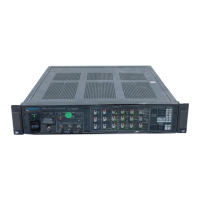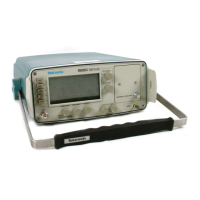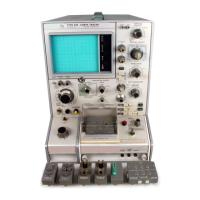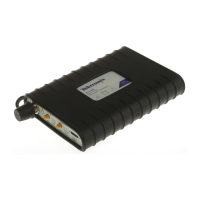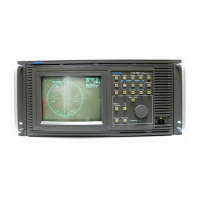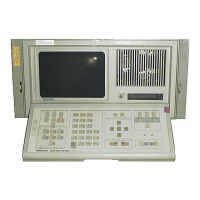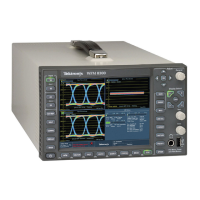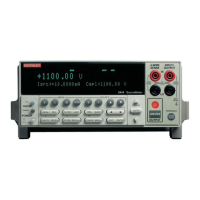Maintenance
1720/1721
6–7
Instructions in Section 2), and by being sure that a malfunction has not
occurred down stream from the vectorscope.
2. Determine and evaluate all trouble symptoms
. This is accomplished by
isolating the problem to a general area such as an assembly. The block
diagram is a valuable aid in signal tracing and circuit isolation.
CAUTION. Probes and Meter Leads:
Use extreme care when probing with meter leads or probes, because of the high
component density and limited access within the instrument. The inadvertent
movement of leads or a probe could cause a short circuit or transient voltages
capable of destroying components.
3. Determine the nature of the problem. Attempt to make the determination of
whether the instrument is out of calibration or if there has been a component
failure. Once the type of failure has been determined, proceed on to identify
the functional area most likely at fault.
4. Visually inspect the suspect assembly for obvious defects
. Most commonly
these will be broken or loose components, improperly seated components,
overheated or burned components, chafed insulation, etc. Repair or replace
all obvious defects. In the case of overheated components, determine the
cause of overheating and correct the cause before re-applying power.
5. Use successive electrical checks to locate the source of the problem
. The
primary tool for problem isolation is the oscilloscope. Use the Performance
Check Procedure (located in Section 5) to determine if a circuit is operating
within specifications. At times it may be necessary to change a calibration
adjustment to determine if a circuit is operational, but since this can destroy
instrument calibration, care should be exercised. Before changing an
adjustment, note its position so that it can be returned to its original setting.
6. Determine the extent of the repair
. If the necessary repair is complex, it may
be advisable to contact your local Tektronix field office or representative
before continuing. If the repair is minor, such as replacing a component, see
the parts list for replacement information. Removal and replacement
procedures for the assemblies can be found under Corrective Maintenance.
CAUTION. Removing Components:
Always remove the assembly from the instrument prior to attempting to replace a
soldered-in component. See Corrective Maintenance for the correct procedure.
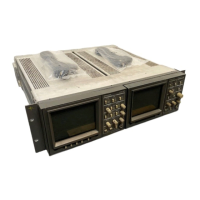
